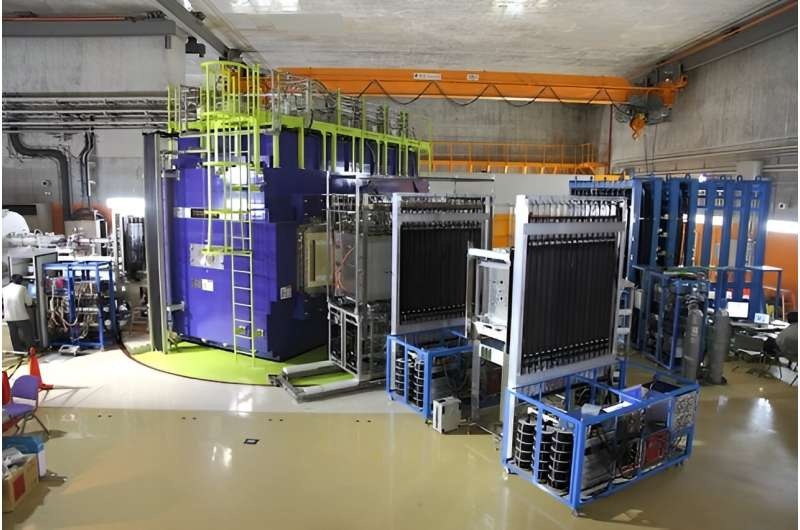Groundbreaking research at the RIKEN RI Beam Factory in Japan has revealed the possible existence of a superfluid state in the rare fluorine isotope 29F and the oxygen isotope 28O, opening up new opportunities to explore the exotic behavior of nuclear matter at the limits of existence.

Shifting the Frontiers of Nuclear Physics
A recent study by the SAMURAI21-NeuLAND Collaboration has revealed intriguing behavior of the rare fluorine isotope 30F, suggesting that the breakdown of nuclear ‘magic numbers’ in nuclear structure is much less pronounced than what previous studies of this elusive nucleus lead to believe
The SAMURAI spectrometer and the NeuLAND neutron detector advanced enough to determine the origin particles of 30F, and by reconstruction of the energy spectrum formed by decay products, make a breakthrough in decoding properties of this isotope. The results indicate that 29F and 28O could be superfluid, the rare and intriguing state of nuclear matter experienced previously only in heavier isotopes and not near the boundaries of nuclear stability.
Delving into the Mysteries of Superfluid Nuclei
In the Chart of Nuclides, a superfluid phase should not appear frequently and the possible observation of it in 29F and 28O is very promising. So far, superfluidity has been seen only in the heavier tin (Sn) isotopic chain where neutron pairs form at high separation distances and appear to be a Cooper-pair-like regime.
Yet in the case of 29F and 28O, the scientists argue that superfluidity might happen by a distinct route: The surplus neutrons pair up and freely scuttle around between energy states, similar to a Bose-Einstein condensate. This surprise observation has potentially profound implications for our understanding of nuclear matter under conditions more extreme than anything accessible in terrestrial experiments, such as the equations of state of cold dense nuclear matter in neutron stars.
Conclusion
The SAMURAI21-NeuLAND Collaboration has led a pioneering work in the nuclear physics domain, and also brought to light a so-far speculative superfluid phase of rare fluorine and oxygen isotopes. These results not only contradict our conventional description of nuclear structure, but also open up the possibility for future experiments to explore the exotic nature of nuclei at the brink of existence. As researchers continue to probe the frontiers of science, what they find in this study may reach into our understanding of how everything in the universe is put together.
